
Stokke is a former municipality in Vestfold county, Norway. The 118-square-kilometre (46 sq mi) municipality existed from 1838 until its dissolution on 1 January 2017. The area is now part of Sandefjord Municipality. The administrative centre was the village of Stokke. Other main villages in Stokke included Vear, Melsomvik, Storevar, and Valberg.
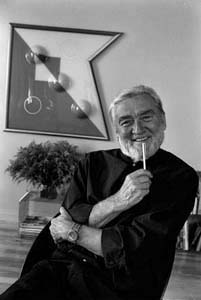
Verner Panton is considered one of Denmark's most influential 20th-century furniture and interior designers. During his career, he created innovative and futuristic designs in a variety of materials, especially plastics, and in vibrant and exotic colors. His style was very "1960s" but regained popularity at the end of the 20th century. As of 2004, Panton's best-known furniture models are still in production.

A kneeling chair is a type of chair for sitting in a position with the thighs dropped to an angle of about 60° to 70° from vertical, with some of the body's weight supported by the shins.

Liberty, commonly known as Liberty's, is a luxury department store in London, England. It is located on Great Marlborough Street in the West End of London. The building spans from Carnaby Street on the East to Kingly Street on the West, where it forms a three storey archway over the Northern entrance to the Kingly Street mall that houses the Liberty Clock in its centre. Liberty is known around the world for its close connection to art and culture, but it is most famous for its bold and floral print fabrics. The vast mock-Tudor store also sells men's, women's and children's fashion, beauty and homewares from a mix of high-end and emerging brands and labels.
William Eugene Stumpf was an American furniture designer who helped design the Aeron, Embody and Ergon chairs for Herman Miller.
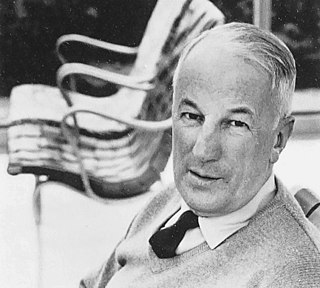
Bruno Mathsson was a Swedish architect and furniture designer whose ideas aligned with functionalism, modernism, as well as the Swedish crafts tradition.
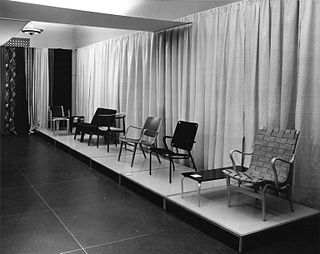
Scandinavian design is a design movement characterized by simplicity, minimalism and functionality that emerged in the early 20th century, and subsequently flourished in the 1950s throughout the five Nordic countries: Denmark, Finland, Norway, Sweden, and Iceland.

Kartell is an Italian company that makes and sells plastic contemporary furniture. It is headquartered in Noviglio, Metropolitan City of Milan, Italy, and it is a subsidiary of Felofin.
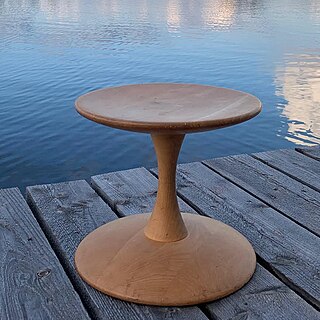
Nanna Ditzel was a Danish designer.
Antonio Citterio is an Italian architect, furniture designer and industrial designer who lives and works in Milan.
Matthew Hilton is a British industrial designer of modern furniture, lighting, and sculptural works.

Robin Day, OBE, RDI, FCSD was one of the most significant British furniture designers of the 20th century, enjoying a long career spanning seven decades. An accomplished industrial and interior designer, he was also active in the fields of graphics and exhibitions.

Niels Diffrient was an American industrial designer. Diffrient focused mainly on ergonomic seating, and his most well known designs are the Freedom and Liberty chairs, manufactured by Humanscale.
George James Sowden is a British designer and product developer based in Milan.
Stokke AS is a Norwegian manufacturer of children's furniture and accessories, founded by Georg Stokke in 1932. Stokke is known for producing the Tripp Trapp adjustable high chair, the best-selling item of furniture in Norway, developed by the Norwegian furniture designer Peter Opsvik and launched in 1972.

Børge Mogensen, was a Danish furniture designer.
Peter Opsvik was a Norwegian industrial designer best known for his innovative and ergonomic chairs, and the father of Jazz bass player Eivind Opsvik. Opsvik's furniture can be found under the brand names: Rybo (Garden), Nomi High Chair, Håg, Varier (Balans), Stokke Naturellement (Reflex), Cylindra and Moment (Globe). His book Rethinking Sitting came out in 2009 giving insight into his thinking about sitting and explaining the philosophy behind his chairs. Peter Opsvik was also a jazz musician. He was a member of Christiania Jazz band from 1972 and the band Christiania 12 from 1993.
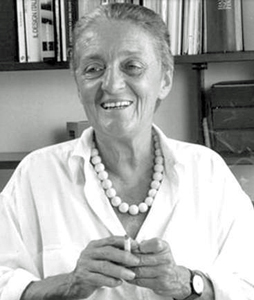
Anna Castelli Ferrieri was an Italian architect and industrial designer. She is most known for her influence in the use of plastics as a mainstream design material and her cofounding of Kartell, an Italian contemporary furniture company.

Anna Ingrid Caroline Schlyter, is a Swedish artist focusing on sculpture and installations. She is best known for her furniture sculptures that have been exhibited in numerous countries.













